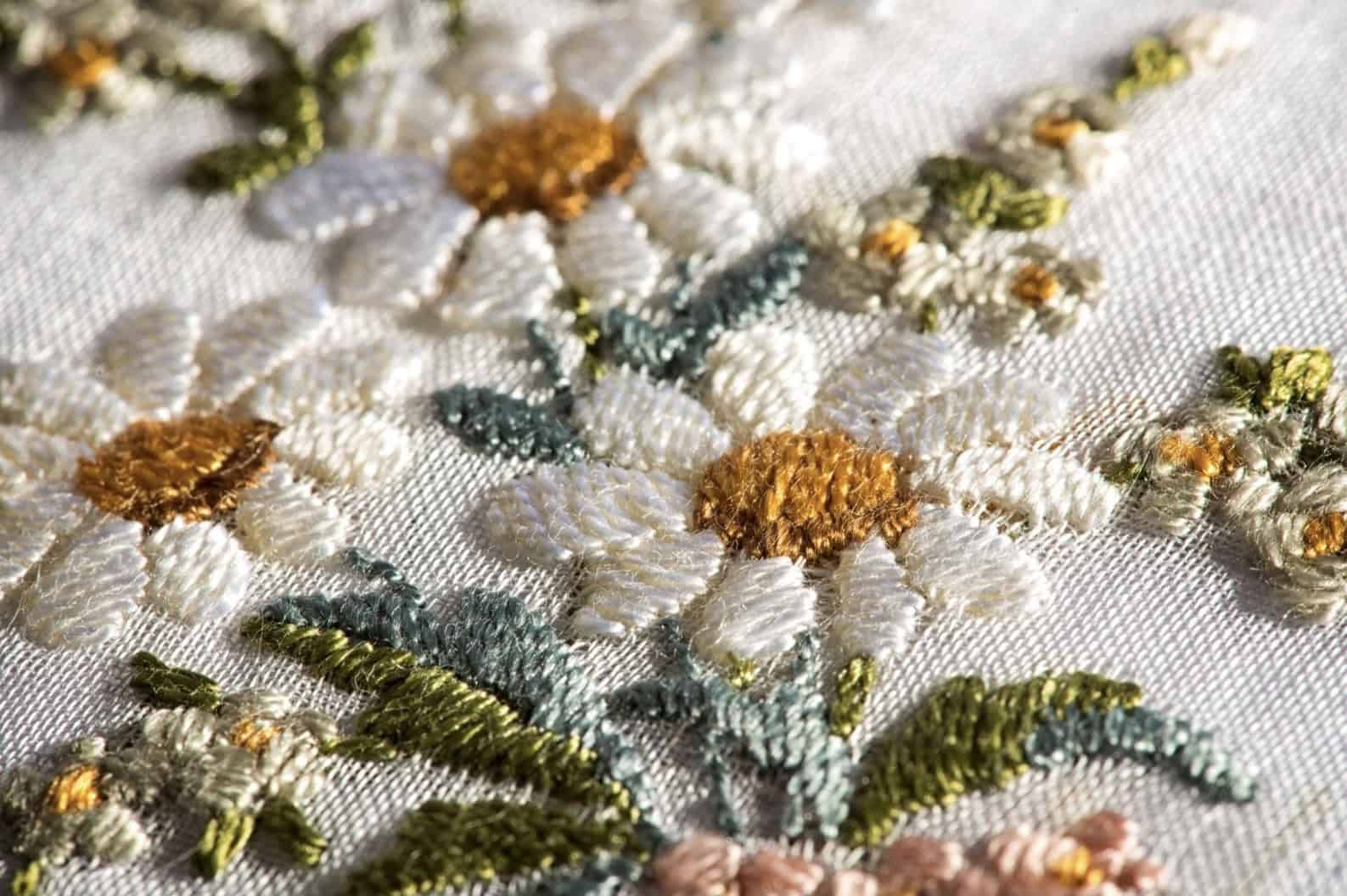Embroidered clothing looks beautiful, but in order to make the embroidering stand the test of time, extra care needs to be taken when washing the garments. Here are the answers to some frequently asked questions about how to machine-wash embroidery, starting from top tips for preventing thread fraying while making your masterpiece, through to how to dry embroidered clothing pieces.
Can You Machine-Wash Embroidery?
The simple answer is, yes, you absolutely can! However, care must be taken. While it is best-practice to hand-wash embroidered clothing, machine-washing is possible if you aren’t a fan of hand-washing, or if you simply have too many pieces that you can’t hand-wash them all. Read on for information about the preventative measures to take before, during and after machine-washing embroidered clothing.
How to Machine-Wash Embroidery
Make sure you use a delicate setting, ideally with cold water, or at a temperature of no more than 30 degrees. If your embroidered clothing contains red thread, it might be best not to wash with light-coloured garments, because red dye is prone to transferring onto other clothes.
Tumble drying is not recommended for embroidered clothing, as it can make the thread go fuzzy and start to fray. In addition to this, tumble drying garments increases the risk of shrinking them, which could damage your embroidery. Instead, hang your embroidered clothing in a warm room or outside, and let them air dry naturally.
Some more useful tips on machine washing embroidery:
- Never bleach your embroidered clothing, especially with a chlorine-based bleach, and be careful of hand-washing with chemicals;
- Don’t let an embroidered garment sit in the washing machine once the cycle is complete, remove it straight away and hang it up to dry;
- Never wring out, fold or pull the fabric of a hand-embroidered piece, and avoid rubbing stains too aggressively;
- Don’t machine-wash vintage pieces or pieces with sentimental value; and
- Don’t machine-wash embroidery using silk or wool fabrics, or pieces that are embroidered with a woollen thread. Instead, take these to be professionally dry cleaned.
Make Your Embroidery Last
Embroidery is a craft loved and used by many across the world. The art of taking a needle and thread to a piece of fabric or canvas, as a way of decorating and embellishing it, is a hobby or profession loved by a wide variety of people.
Businesses across the globe use embroidery as a way of marking a product as their own, with a logo or slogan embellished on garments and merchandise. It is a more durable alternative to printing logos, which tend not to survive machine-washing as well as embroidered clothing does.
As a hobby, embroidery is loved because of the creativity and focus needed to create a beautiful piece of embroidered clothing or art. Designs can be free-handed, or built from pre-existing motifs. With hand-embroidery, shapes and pictures are filled in using a needle, and thread of many different colours, to create a three-dimensional piece of art.
Those who embroider as a hobby often embellish their own pieces of clothing, or on specialist ‘embroidery hoops’ which are designed to hold the fabric taught, and are easier to frame so that they can be displayed in your home. Embroidery requires specific types of needles (read more here) and fabric (read more here), that make the process easier, and product a more finished-looking final product.
Embroidery has been around for centuries. Derived from weaving, embroidery was first used as a way of mending clothes when new ones could not be sourced or afforded, or for the rich to display their wealth with lavishly embellished embroidered clothing garments and décor. Throughout history it has served as a common pastime for ladies in the 19th and early 20th centuries, who often used it to tell stories if they weren’t well-educated and couldn’t read and write.
The first step to take when making your embroidered clothing last beautifully is to embroider them well (if you’re doing it yourself, that is). While no embroidered piece is guaranteed to withstand a machine-wash, there are some quick preventative measures you can take.
• Secure Loose Threads
This point may sound obvious, but you’d be surprised how often it is missed! For pieces of embroidered clothing, it is recommended that you finish off with knots. Especially if clothing pieces are worn frequently, stitches can loosen over time and are susceptible to coming apart when machine-washing embroidery.
• Use A High Quality Thread
Using a high-quality thread or yarn to embroider your garments is the best preventative measure for making it stand the test of time. Use a thread that won’t fray or go fuzzy in the wash, and make sure the colour is one that won’t fade easily. To test the durability of the coloured die in your threads, run a wet cotton pad over the embroidered clothing and check for the transfer of any dyes, especially red dyes. If you get a transfer of dye onto your cotton pad, this may be a sign that the colour of the embroidered clothing will fade or run when you machine-wash it.
Hand-Wash Embroidery
If you have the time and energy, then the best way to wash embroidered clothing is to hand-wash it. I know, it’s effort! To do this, take a bowl of lukewarm or cold water and some mild soap, and submerge the piece for a few minutes. After washing, rinse the piece in cold water to ensure no soap remains. If the piece is stained, you will need to treat the stains with a specialist stain-remover before hand-washing.
Hand-washing your embroidered clothing is the best way to ensure the embroidery stays just as beautiful as when you first finished it!
